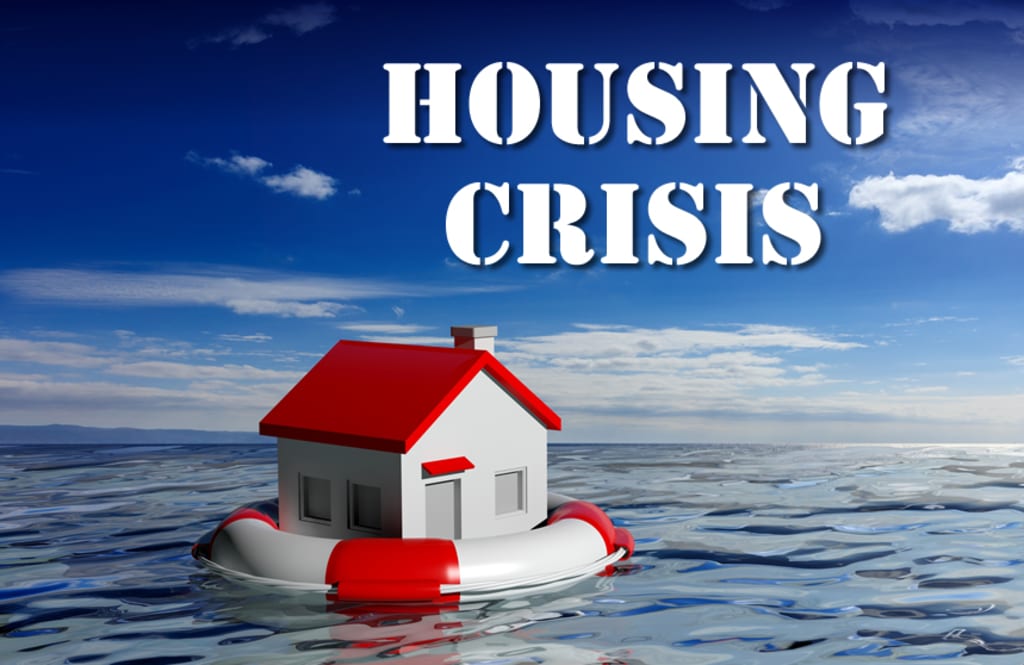
As the title of this article may seem to indicate, this is speculation. However, I am a big believer in the idea of empirical evidence. And it seems such evidence has some pretty good indicators that the housing situation in America is in a rough place.
If you are old enough to remember the housing bubble burst in America a few decades back, you can probably relate to what I am talking about. You may have been felt the pain of it yourself. In that era, what happened among other things was that predatory lenders gave out mortgage loans to anyone and everyone. Often the loans came with an ARM (Adjustable Rate Mortgage) which would balloon over time. This forced many people into foreclosure and homes across this nation to plummet in value as banks where simply typing to get whatever they could for vacant property.
During the height of the Covid-19 Pandemic, pricing soared on many products and scarcity became an issue. Lumber was (and remains) no exception. As we all know, lumber is one of the key elements in building any structures, including homes and apartments. While it is hard to pinpoint, this may have been a starting point for where we are today.
In the county in which I reside, new property tax assessments have gone out of control. In some cases, they have increased by double or even close to triple. Rent and mortgage payments across the nation are increasing at rates exponentially higher than salaries. Eventually, something has got to give.
I expect that in the near future, say within about 3 years tops; we will go through another bubble burst. What will this look like? Well, here’s how I think thing may change.
Downsizing
I wouldn’t at all be surprised if millions of homeowners and apartment dwellers chose to downsize their living space. They may opt for places with one or more less bedrooms or baths, fewer bells and whistles or amenities in the case of renters, and a smaller square footage. While this is not an option for everyone, many people do have more space than they need or are willing to make do with a little cramping.
Zoning Changes
In that same thinking, I would not be shocked to see municipalities making zoning changes to accommodate so-called “tiny homes.” If you are not familiar with the concept, tiny homes are living spaces that rarely exceed 500 square feet and are often smaller than that. As a reference, the median size of an average single-family home that was newly built and sold in 2021 was almost 2,300 square feet.
While popularity in tiny homes has exploded over the last decade or so, many municipalities have zoning laws that will not all for them. With demand growing and a housing crisis in full swing, I would think these laws will go through major revisions to allow such structures in more places.
Taking A Step Back In Time
For those of you who were around for it and for those of us who know about it from older friends and family, there was a trend that was very common in the early part and middle of the 20th century. That trend was multi-family households.
In that time period, millions of people, either out of choice or necessity, grouped more than one family unit into the same building. In some case this was simply for generations to be closer together with each other. In other cases it was to help each other offset the cost. Either way, it was a very big deal and I think we will see a major resurgence in this practice.
While all of this sounds gloom and doom, there are some good things that might eventually play out. These include builders and apartment owners eventually being forced to calm the rapid price increases or stop tearing down trees and uninhabited land to build cookie cutter subdivisions because they won’t be able to sell the lots.
About the Creator
Jason A
Writer, photographer and graphic design enthusiast with a professional background in journalism, poetry, e-books, model photography, portrait photography, arts education and more.






Comments
There are no comments for this story
Be the first to respond and start the conversation.